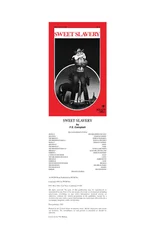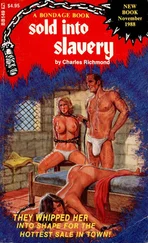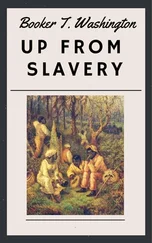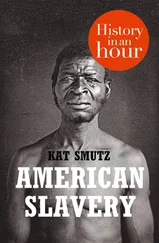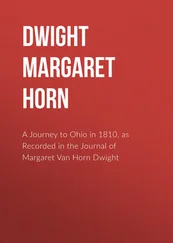Theodore Dwight Weld - American Slavery as It is - Testimonies
Здесь есть возможность читать онлайн «Theodore Dwight Weld - American Slavery as It is - Testimonies» — ознакомительный отрывок электронной книги совершенно бесплатно, а после прочтения отрывка купить полную версию. В некоторых случаях можно слушать аудио, скачать через торрент в формате fb2 и присутствует краткое содержание. Жанр: unrecognised, на английском языке. Описание произведения, (предисловие) а так же отзывы посетителей доступны на портале библиотеки ЛибКат.
- Название:American Slavery as It is: Testimonies
- Автор:
- Жанр:
- Год:неизвестен
- ISBN:нет данных
- Рейтинг книги:4 / 5. Голосов: 1
-
Избранное:Добавить в избранное
- Отзывы:
-
Ваша оценка:
- 80
- 1
- 2
- 3
- 4
- 5
American Slavery as It is: Testimonies: краткое содержание, описание и аннотация
Предлагаем к чтению аннотацию, описание, краткое содержание или предисловие (зависит от того, что написал сам автор книги «American Slavery as It is: Testimonies»). Если вы не нашли необходимую информацию о книге — напишите в комментариях, мы постараемся отыскать её.
"American Slavery As It Is" is a book composed of first-hand accounts of slavery and its horrors. The work focuses on the afflictions that slaves faced, covering their diet, clothing, housing, and working conditions. Harriet Beecher Stowe used «American Slavery As It Is» as the direct inspiration for her novel, Uncle Tom's Cabin.
American Slavery as It is: Testimonies — читать онлайн ознакомительный отрывок
Ниже представлен текст книги, разбитый по страницам. Система сохранения места последней прочитанной страницы, позволяет с удобством читать онлайн бесплатно книгу «American Slavery as It is: Testimonies», без необходимости каждый раз заново искать на чём Вы остановились. Поставьте закладку, и сможете в любой момент перейти на страницу, на которой закончили чтение.
Интервал:
Закладка:
Among other facts stated by Mr. Clay, was the following, which we copy verbatim from the original memorandum, made at the time by Mr. Birney, with which he has kindly furnished us.
"Sept. 16, 1834.--Hon. H. Clay, in a conversation at his own house, on the subject of slavery, informed me, that Hon. Outerbridge Horsey, formerly a senator in Congress from the state of Delaware, and the owner of a sugar plantation in Louisiana, declraed to him, that his overseer worked his hands so closely, that one of the women brought forth a child whilst engaged in the labors of the field.
"Also, that a few years since, he was at a brick yard in the environs of New Orleans, in which one hundred hands were employed; among them were from twenty to thirty young women, in the prime of life. He was told by the proprietor, that there had not been a child born among them for the last two or three years, although they all had husbands. "
The preceding testimony of Mr. Clay, is strongly corroborated by advertisements of slaves, by Courts of Probate, and by executors administering upon the estates of deceased persons. Some of those advertisements for the sale of slaves, contain the names, ages, accustomed employment, &c., of all the slaves upon the plantation of the deceased. These catalogues show large numbers of young men and women, almost all of them between twenty and thirty-eight years old; and yet the number of young children is astonishingly small. We have laid aside many lists of this kind, in looking over the newspapers of the slaveholding states; but the two following are all we can lay our hands on at present. One is in the "Planter's Intelligencer," Alexandria, La., March 22, 1837, containing one hundred and thirty slaves; and the other in the New Orleans Bee, a few days later, April 8, 1837, containing fifty-one slaves. The former is a "Probate sale" of the slaves belonging to the estate of Mr. Charles S. Lee, deceased, and is advertised by G. W. Keeton, Judge of the Parish of Concordia, La. The sex, name, and age of each slave are contained in the advertisement, which fills two columns. The following are some of the particulars.
The whole number of slaves is one hundred and thirty. Of these, only three are over forty years old. There are thirty-five females between the ages of sixteen and thirty-three, and yet there are only THIRTEEN children under the age of thirteen years!
It is impossible satisfactorily to account for such a fact, on any other supposition, than that these thirty-five females were so overworked, or underfed, or both, as to prevent child-bearing.
The other advertisement is that of a "Probate sale," ordered by the Court of the Parish of Jefferson--including the slaves of Mr. William Gormley. The whole number of slaves is fifty-one; the sex, age, and accustomed labors of each are given. The oldest of these slaves is but thirty-nine years old: of the females, thirteen are between the ages of sixteen and thirty-two, and the oldest female is but thirty-eight --and yet there are but two children under eight years old!
Another proof that the slaves in the south-western states are over-worked, is the fact, that so few of them live to old age. A large majority of them are old at middle age, and few live beyond fifty-five. In one of the preceding advertisements, out of one hundred and thirty slaves, only three are over forty years old! In the other, out of fifty-one slaves, only two are over thirty-five; the oldest is but thirty-nine, and the way in which he is designated in the advertisement, is an additional proof, that what to others is "middle age," is to the slaves in the south-west "old age:" he is advertised as " old Jeffrey."
But the proof that the slave population of the south-west is so over-worked that it cannot supply its own waste, does not rest upon mere inferential evidence. The Agricultural Society of Baton Rouge, La., in its report, published in 1829, furnishes a labored estimate of the amount of expenditure necessarily incurred in conducting "a well-regulated sugar estate." In this estimate, the annual net loss of slaves, over and above the supply by propagation, is set down at TWO AND A HALF PER CENT! The late Hon. Josiah S. Johnson, a member of Congress from Louisiana, addressed a letter to the Secretary of the United States' Treasury, in 1830, containing a similar estimate, apparently made with great care, and going into minute details. Many items in this estimate differ from the preceding; but the estimate of the annual decrease of the slaves on a plantation was the same--TWO AND A HALF PER CENT!
The following testimony of Rev. Dr. CHANNING, of Boston, who resided some time in Virginia, shows that the over-working of slaves, to such as extent as to abridge life, and cause a decrease of population, is not confined to the far south and south-west.
"I heard of an estate managed by an individual who was considered as singularly successful, and who was able to govern the slaves without the use of the whip. I was anxious to see him, and trusted that some discovery had been made favorable to humanity. I asked him how he was able to dispense with corporal punishment. He replied to me, with a very determined look. 'The slaves know that the work must be done, and that it is better to do it without punishment than with it.' In other words, the certainty and dread of chastisement were so impressed on them, that they never incurred it.
"I then found that the slaves on this well-managed estate, decreased in number. I asked the cause. He replied, with perfect frankness and ease, 'The gang is not large enough for the estate.' In other words, they were not equal to the work of the plantation, and yet were made to do it, though with the certainty of abridging life.
"On this plantation the huts were uncommonly convenient. There was an unusual air of neatness. A superficial observer would have called the slaves happy. Yet they were living under a severe, subduing discipline, and were over-worked to a degree that shortened life. "-- Channing on Slavery, page 162, first edition.
PHILEMON BLISS, Esq., a lawyer of Elyria, Ohio, who spent some time in Florida, gives the following testimony to the over-working of the slaves:
"It is not uncommon for hands, in hurrying times, beside working all day, to labor half the night. This is usually the case on sugar plantations, during the sugar-boiling season; and on cotton, during its gathering. Beside the regular task of picking cotton, averaging of the short staple, when the crop is good, 100 pounds a day to the hand, the ginning (extracting the seed,) and baling was done in the night. Said Mr.----to me, while conversing upon the customary labor of slaves, 'I work my niggers in a hurrying time till 11 or 12 o'clock at night, and have them up by four in the morning.'
"Beside the common inducement, the desire of gain, to make a large crop, the desire is increased by that spirit of gambling, so common at the south. It is very common to bet on the issue of a crop. A. lays a wager that, from a given number of hands, he will make more cotton than B. The wager is accepted, and then begins the contest; and who bears the burden of it? How many tears, yea, how many broken constitutions, and premature deaths, have been the effect of this spirit? From the desperate energy of purpose with which the gambler pursues his object, from the passions which the practice calls into exercise, we might conjecture many. Such is the fact. In Middle Florida, a broken-winded negro is more common than a broken-winded horse; though usually, when they are declared unsound, or when their constitution is so broken that their recovery is despaired of they are exported to New Orleans, to drag out the remainder of their days in the cane-field and sugar house. I would not insinuate that all planters gamble upon their crops; but I mention the practice as one of the common inducements to 'push niggers.' Neither would I assert that all planters drive the hands to the injury of their health. I give it as a general rule in the district of Middle Florida, and I have no reason to think that negroes are driven worse there than in other fertile sections. People there told me that the situation of the slaves was far better than in Mississippi and Louisiana. And from comparing the crops with those made in the latter states, and for other reasons, I am convinced of the truth of their statements."
Читать дальшеИнтервал:
Закладка:
Похожие книги на «American Slavery as It is: Testimonies»
Представляем Вашему вниманию похожие книги на «American Slavery as It is: Testimonies» списком для выбора. Мы отобрали схожую по названию и смыслу литературу в надежде предоставить читателям больше вариантов отыскать новые, интересные, ещё непрочитанные произведения.
Обсуждение, отзывы о книге «American Slavery as It is: Testimonies» и просто собственные мнения читателей. Оставьте ваши комментарии, напишите, что Вы думаете о произведении, его смысле или главных героях. Укажите что конкретно понравилось, а что нет, и почему Вы так считаете.

